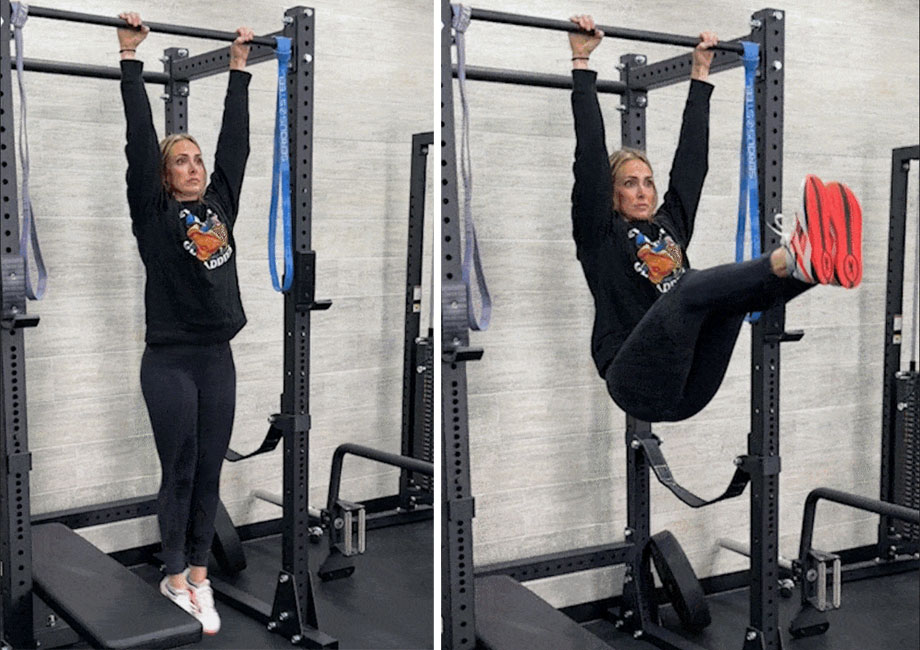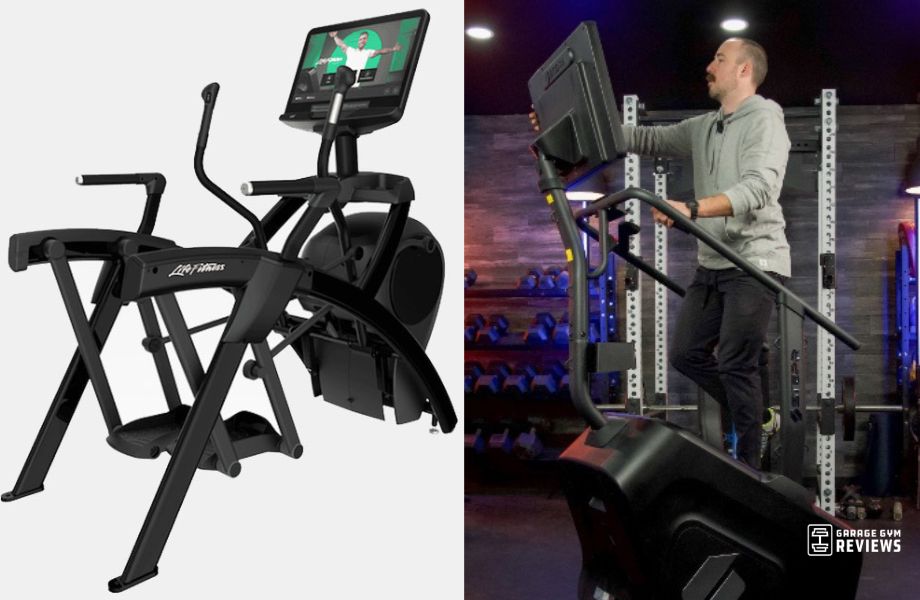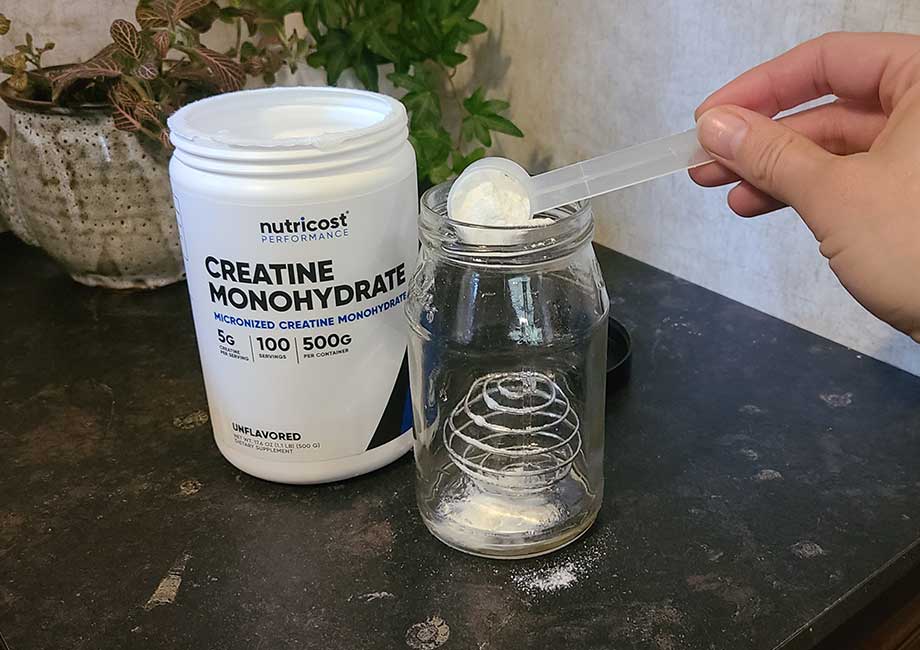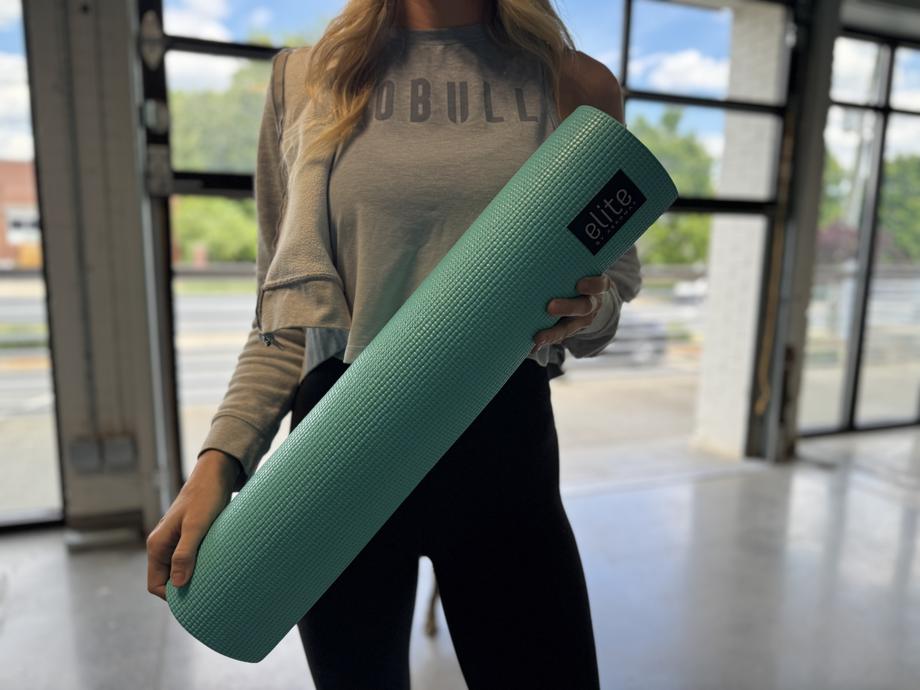Unlike conventional bodyweight ab exercises, for hanging leg raises, you suspend yourself from a pull-up bar and engage your core to lift your legs to parallel. This position demands core and grip strength, calling for precise full-body control throughout your sets and reps. It’s a top pick for targeting the often neglected lower abdominal muscles and giving some attention to your hip flexors.
Drawing from my experience as a certified strength and conditioning specialist (CSCS), I’ve encountered countless individuals convinced that endless crunches are the sole path to a strong and shredded core. Introducing hanging leg raises into your routine could be the game-changer you’ve been seeking.
RELATED: Ultimate Dumbbell Core Workout
Hang in there with me as I share a full tutorial on mastering hanging leg raises, exploring alternative approaches and variations, and highlighting the many benefits of this formidable ab exercise. It’s a must-add to your ab workout, and I’m here to guide you through every step.
How To Do Hanging Leg Raises
Hanging leg raises reign as a demanding ab exercise that relies on core stability and significant grip strength. Pulling your legs up to parallel using your abs, forearms, upper back, and core to stabilize your upper body is no joke. You might as well consider this movement a full-body endeavor.
How to do it:
- Hang from a pull-up bar with an overhand grip, your hands shoulder-width apart and arms fully extended. Squeeze your shoulder blades and core to stabilize your upper body.
- Lift your legs toward your torso while keeping them straight, aiming to bring them parallel to the floor.
- Hold the top position briefly, then slowly lower your legs with control.
- Repeat for the desired number of sets and reps.
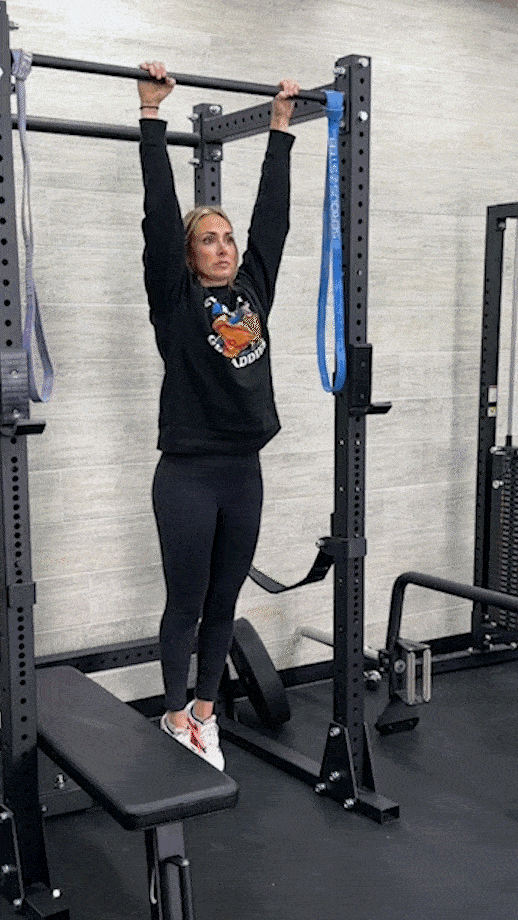
Modifications
- Dial it back: Try the hanging knee raise first for a less intense variation. Alternatively, regress the movement further with captain’s chair leg raises which offer increased support. If a pull-up bar or rack to hang from aren’t available, floor-based exercises such as lying leg lifts, reverse crunches, or hollow-body holds can also target your lower abs and help build core strength.
- Make it harder: To boost the intensity without extra equipment, try slowing down your reps during the upward or downward phase. Alternatively, amp up the challenge by incorporating weight—grab a dumbbell or medicine ball and hold it securely between your feet or legs or strap on a pair of the best ankle weights for added resistance.
How To Do Hanging Leg Raises At Home
Use a sturdy pull-up or horizontal bar to knock out your hanging leg raises at home. Another helpful option is utilizing ab straps in a squat or power rack. If those options aren’t in the cards for you, don’t sweat it—I’ve got some alternative moves listed below that’ll still give you a killer core workout.
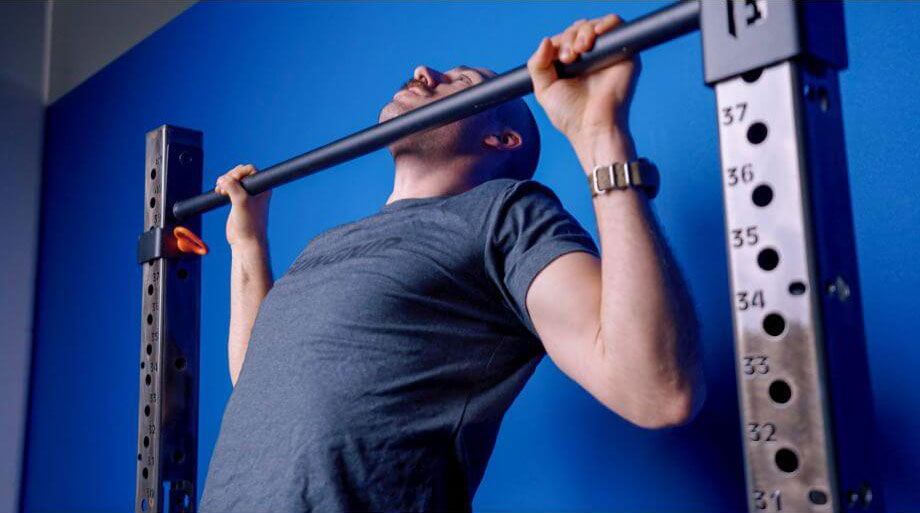
RELATED: Best Pull-Up Bars
Hanging Leg Raise Variations
Dead Hang
An excellent progression to prime the upper body for the hanging leg raise, the dead hang involves hanging from a pull-up bar with your arms fully extended, shoulder blades squeezed together, and core engaged to stabilize your torso. This exercise also helps develop grip strength for prolonged holds.
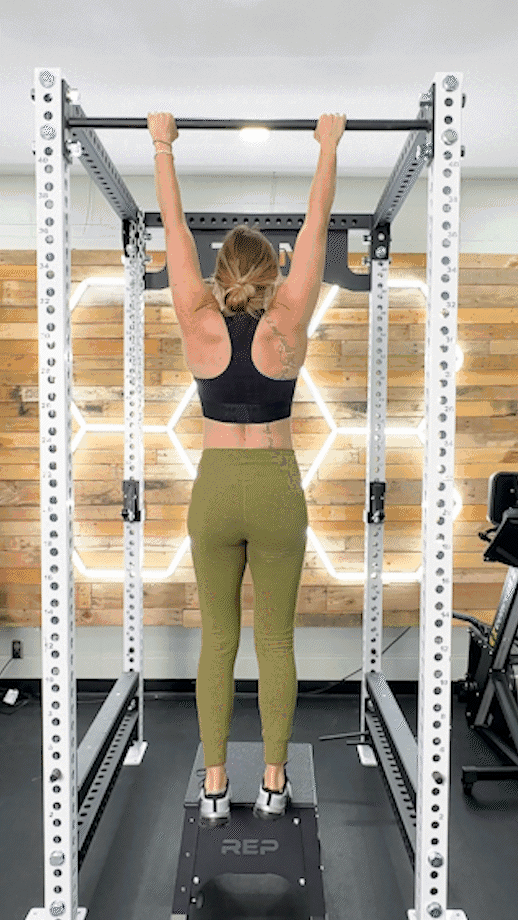
Hanging Knee Raise
This movement involves lifting your knees to hip level and pulling them firmly toward your chest using your abdominal muscles. It serves as a final progression before attempting the hanging leg raise, as you’re only required to lift the weight of your upper thighs into the bent-knee position instead of your entire leg, allowing for the gradual build-up of strength and control.

Hanging L-Sit
The hanging L-sit is an advanced variation that demands significant isometric strength and endurance in your core, hip flexors, and forearms. While suspended from a pull-up bar, you lift your legs until they reach a parallel position to the ground, creating an “L” shape with your body.
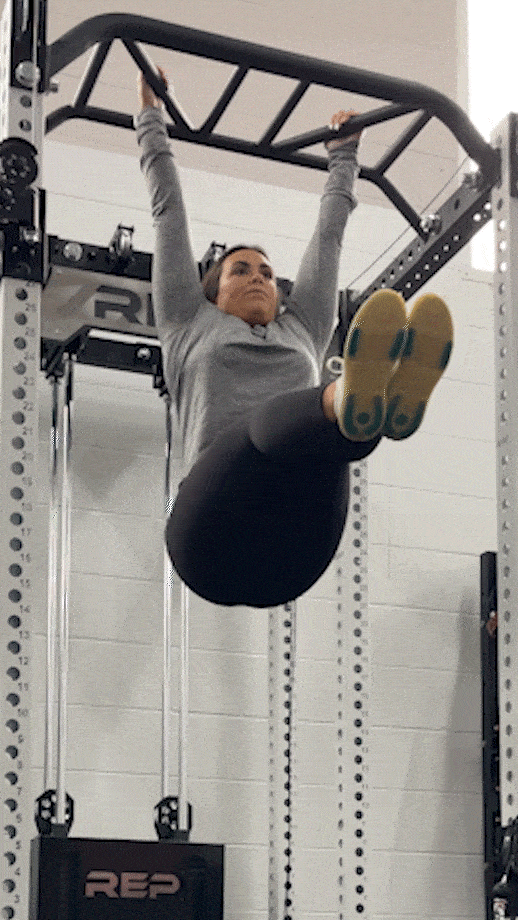
Toes-To-Bar
Take the hanging leg raise to the next level by extending your legs fully until your toes touch the bar overhead. This movement is pivotal for mastering momentum control and ensuring proper muscle engagement for stabilizing your body throughout the exercise.
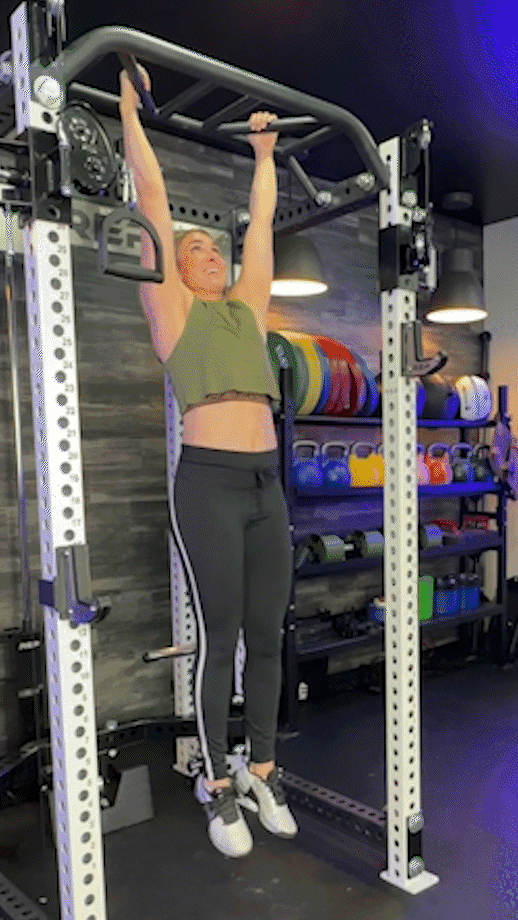
Hanging Leg Raise Alternatives
If you’re not quite ready for hanging leg raises or don’t have access to a pull-up bar, check out these awesome alternatives. I’ve sorted them from easiest to toughest so you can easily find the one that fits your fitness level and goals!
Lying Leg Lifts
Why do it: Lying leg lifts are like the entry-level version of hanging leg raises—straightforward and easy for everyone, no matter your fitness level. They target the same muscle groups as hanging leg raises, stimulating your lower abs without needing grip strength. Lying leg lifts are a great addition to a beginner core workout if you’re working up to more advanced ab exercises.
How to do it:
- Lie flat on your back with your arms by your sides.
- Squeeze your core muscles to stabilize your body and keep your lower back pressed into the mat.
- Raise your legs upward toward the ceiling while keeping them straight. Aim to lift your legs three to six inches off the floor.
- Pause briefly at the top of the movement, then lower your legs back to the starting position with control.
- Repeat for the desired number of sets and repetitions.
Expert tip: Focus on pointing your toes and squeezing your quads as you slowly lower your legs. Engaging your legs helps stabilize your lower body and pelvis, allowing you to feel your core muscles engaging.
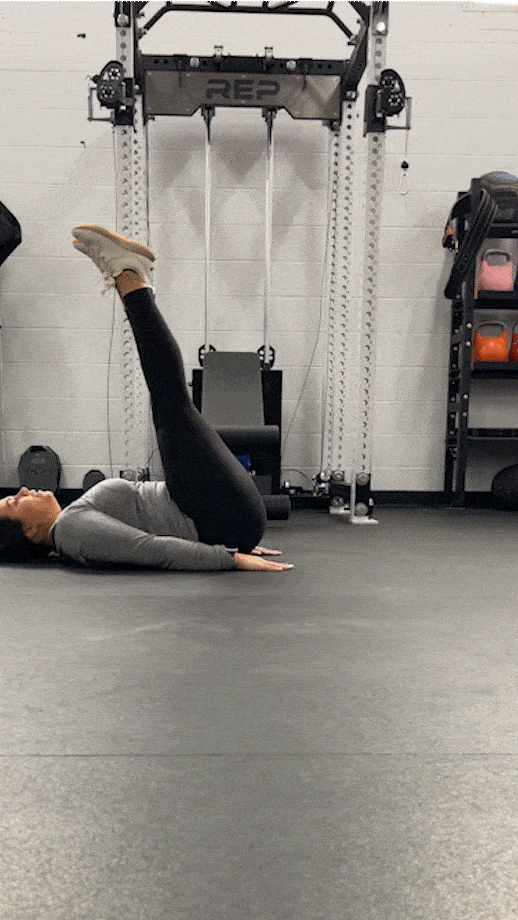
Reverse Crunch
Why do it: For the reverse crunch, instead of lifting your shoulders off the ground like regular crunches, you’ll lift your hips toward your chest, really targeting your lower abs. Plus, reverse crunches add a twist by using eccentric training, which helps you nail down core engagement, especially if you struggle to strengthen your abs with regular crunches. In a December 2021 narrative review in the Journal of Functional Morphology and Kinesiology1, researchers found eccentric training effective for improving the benefits of hypertrophy, strength, and power training.
How to do it:
- Lie on your back with your arms by your sides.
- Bend your knees to form a 90-degree angle.
- Lift your hips and lower back off the ground, bringing your knees toward your chest.
- Pause, then slowly reverse the movement by gently lowering your back and hips to the floor.
- Repeat for desired sets and repetitions.
Expert tip: As you lower your hips towards the floor, exhale for a prolonged period and squeeze your abs. You’ll understand why soon enough.
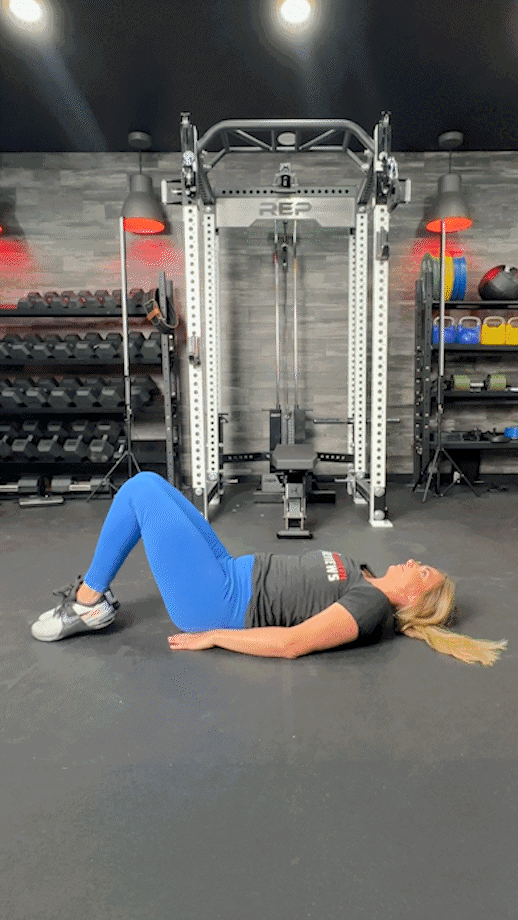
Hollow-Body Hold
Why do it: The hollow-body hold is a foundational core exercise that aids in mastering more advanced movements. This move is about getting in tune with your body and building core strength to keep you steady during workouts. Hollow holds illustrate the effects of isometric exercises, helping build strength, power, and muscular endurance, as supported in an April 2022 study in Healthcare (Basel)2.
Whether you aim to master dynamic variations like hollow-body rocking or dominate CrossFit movements such as kipping pull-ups, getting the hang of the hollow-body hold may help.
How to do it:
- Lie on your back, reaching your arms overhead and keeping your legs straight.
- Engage your glutes and squeeze your legs together.
- Lift your legs four to six inches off the ground, pointing your toes and squeezing your quads.
- Lift your upper body off the ground, keeping your arms overhead with your biceps by your ears.
- Squeeze your abs to stabilize the hollow body position.
- Hold for the prescribed time and then repeat for the desired amount of sets.
RELATED: Hollow Hold Workout
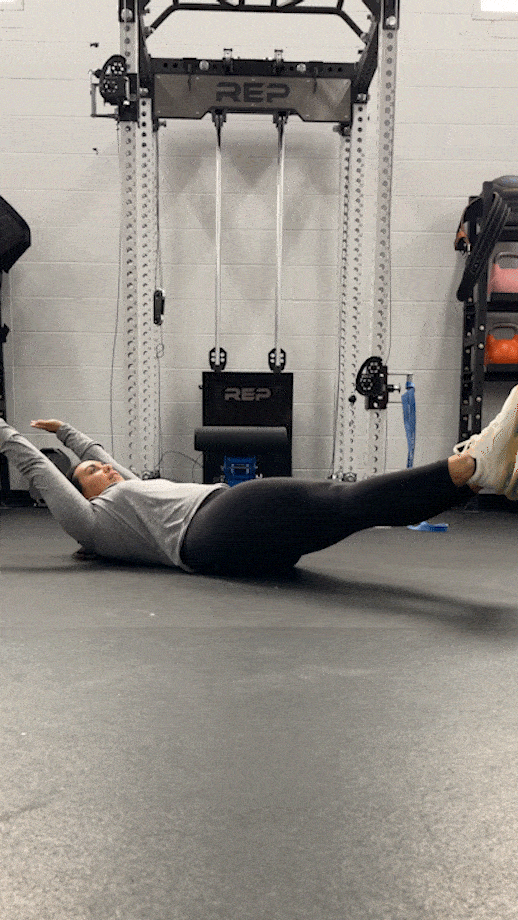
Captain’s Chair Leg Raise
Why do it: The captain’s chair leg raise bridges the gap between lying leg raises and hanging leg raises. According to the American Council on Exercise3, it’s one of the most effective exercises for targeting the rectus abdominis and the obliques. Due to the supported position, you can focus on feeling the abdominal muscles lengthen4 during the lowering phase, which may help to improve hypertrophy in your core, especially the distal region—aka your lower abs.
How to do it:
- Sit on the captain’s chair machine with your back against the backrest and grip the handles firmly.
- Engage your core muscles and keep your back straight.
- Lift your knees toward your chest with straight legs, bringing them as close to your torso as possible.
- Lower your legs slowly, returning to the starting position without swinging or using momentum.
- Repeat for the desired number of sets and repetitions.
Benefits of Hanging Leg Raises
Hanging leg raises aren’t just about strengthening your abs and getting them to pop—they’re all about boosting your grip strength and giving your upper body more stability. Plus, throwing them into your core routine can level-up your athletic performance, increase your flexibility, and improve your mobility.
May Help Improve Core Strength and Definition
Hanging leg raises primarily target your lower abdominal muscles, an often neglected muscle group, helping build strength and definition. In an August 2014 study in the Journal of Sports Science5, researchers found that the hanging leg raise “created the highest challenge to the abdominal wall,” reinforcing the effectiveness of the exercise.
Lifting your legs while suspended requires a strong engagement of your entire core, including the rectus abdominis, obliques, transverse abdominis, and hip flexors. This level of muscle activation contributes to a more defined midsection and enhances functional core strength, which is crucial for stability and balance in various activities like lifting and sports.
RELATED: Hip Flexor Exercises
May Help Enhance Grip Strength and Upper-Body Stability
After a few rounds of hanging leg raises, the demand for your grip strength becomes evident. Holding onto the pull-up bar securely throughout the exercise calls for considerable grip strength and forearm endurance. As you elevate your legs, your upper back muscles and shoulder stabilizers activate to provide support, ensuring your upper body remains stable and minimizing unnecessary movement.
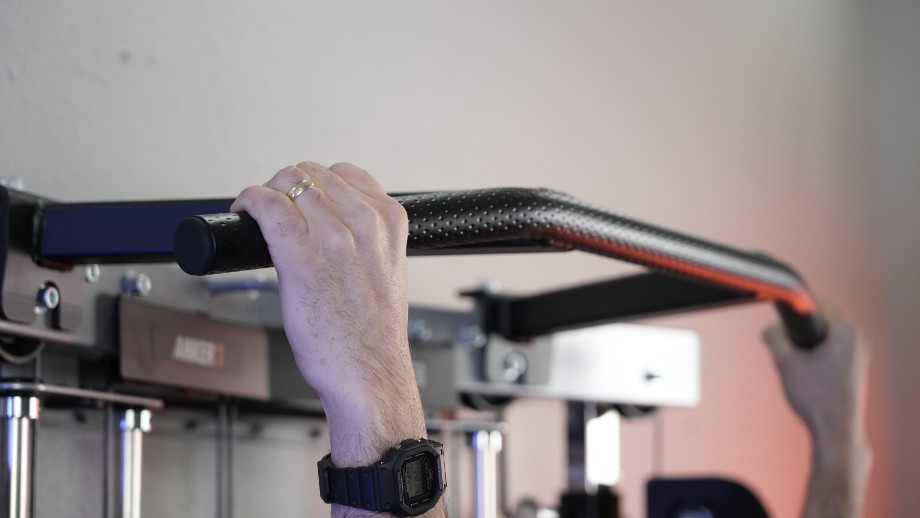
With consistent practice, the enhanced grip strength and upper-body stability achieved from hanging leg raises can improve performance in various exercises and activities that rely on upper-body strength and coordination.
May Help Increase Flexibility and Range of Motion
Core exercises like hanging leg raises offer an unexpected bonus: they help improve flexibility in your hip flexors and hamstrings. During hanging leg raises, as you lift your legs to parallel, you stretch these muscles, making them more flexible. Why does this matter? Flexible hip flexors can boost your performance in running, jumping, or kicking. Having “loose” hamstrings reduces injury risk and back pain and improves everyday mobility.
Common Hanging Leg Raise Mistakes
If you’re plugging hanging leg raises into your workout or trying to nail down your technique, keep an eye out for these three slip-ups that could throw you off track.
Too Much Swinging Momentum
When doing hanging leg raises, steer clear of swinging your legs up too high or jerking them around. That kind of momentum might feel tempting, especially as fatigue builds, but it actually takes away from the intent of the exercise and can strain your lower back. Keep it smooth and controlled to trigger your core muscles!
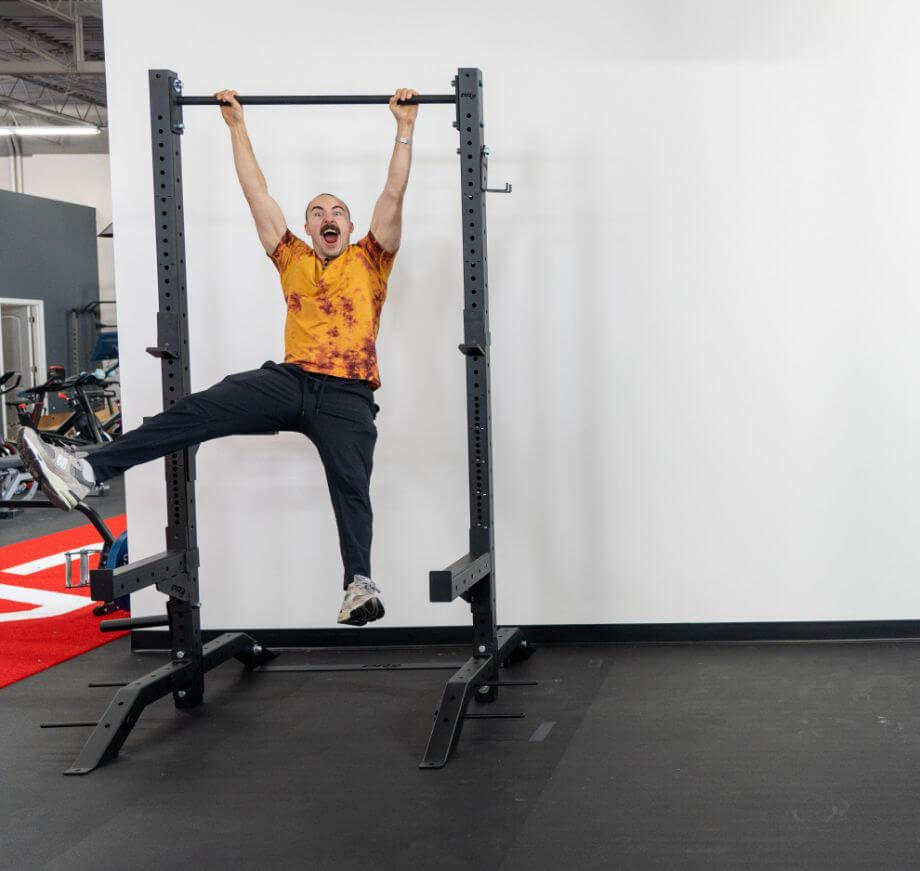
Not Completing the Full Range of Motion
Cutting corners on your reps might help you finish faster, but it cheats you out of the full benefits of the hanging leg raise. Make sure you lift your legs until they’re parallel to the ground—no shortcuts! An optimal range of motion engages your abdominal muscles more and ensures your abs get the full workout they deserve.
Moving Too Fast
It’s all about quality over quantity. Speedy reps might seem efficient, but they often sacrifice form, risk injury, and compromise the effectiveness of your workout. Focus on finding a slow-and-steady rhythm for each rep, ensuring safety and optimal muscle engagement every time.
Muscles Worked by Hanging Leg Raises
Getting a grip on the muscles—the rectus abdominis, transverse abdominis, obliques, and hip flexors—engaged in the hanging leg raise is vital for crafting your workouts.

Here’s a quick breakdown:
- Rectus Abdominis6: The rectus abdominis, positioned at the front of the abdomen, flexes the spine and pulls the pelvis toward the ribcage. It also stabilizes the core and maintains proper form during hanging leg raises.
- Transverse Abdominis7: The transverse abdominis is a deep stabilizing muscle encircling the abdomen, offering support and stability to the spine and pelvis. Activating it is crucial for keeping proper alignment and preventing excessive lower back arching during hanging leg raises.
- Obliques8: The obliques, situated on the sides of the abdomen, help stabilize the torso and pelvis during hanging leg raises. Additionally, they contribute to trunk rotation and bending, enhancing overall core strength and stability.
- Hip Flexors9: The hip flexors, including the iliopsoas and rectus femoris, are responsible for flexing the hip joint and lifting the legs upward. Strong hip flexors are essential for generating power and maintaining control throughout the movement.
Hanging Leg Raises: Final Thoughts
The hanging leg raise takes traditional ab workouts to a whole new level. It’s great for targeting your abdominal region, especially your lower abs, and it also increases grip strength and upper-body stability.
Here’s a quick look at why the hanging leg raise is an impressive ab exercise to add to your workout.
- The hanging leg raise is one of the most effective exercises for targeting your anterior (front) and lateral (side) core muscles.
- The hanging leg raise specifically trains your rectus abdominis, transverse abdominis, obliques, and hip flexors.
- It improves core muscle strength, definition, grip strength, upper-back stability, flexibility, and mobility.
- Avoid common mistakes like too much swinging momentum, an incomplete range of motion, or knocking out reps too quickly.
- Rely on alternatives and variations if you can’t perform quality sets of hanging leg raise.
Hanging Leg Raises: FAQs
Are hanging leg raises effective?
Hanging leg raises are great for targeting your lower abs and hip flexors. When you nail the form and put in the effort, they can also help you beef up your core strength. As a certified strength and conditioning specialist (CSCS), I love their versatility, allowing for eccentric training and weighted or rotational variations. You can also implement various degrees of positions to amplify the challenge. And don’t forget their sneaky ability to improve grip strength!
What happens if I do hanging leg raises every day?
Let’s get this out of the way: Doing hanging leg raises daily won’t give you six-pack abs. Doing them every day could, however, lead to overuse injuries and muscle fatigue. Your abs need rest to rebuild and grow stronger.
So, mix up your ab exercises with other options like rotational and anti-rotation training, oblique workouts, and functional core exercises. Take enough rest days, and listen to your body to avoid overtraining and injuries. Consistency matters, but so does preventing long-term damage.
Are sit-ups or hanging leg raises better?
Sit-ups and hanging leg raises are killer moves to add to your ab workouts, but they hit different muscle groups. Sit-ups focus more on those upper abs, working that rectus abdominis while hanging leg raises target the lower abs, hip flexors, and all those stabilizing muscles in your core. When choosing between sit-ups and hanging leg raises, consider your fitness goals and what you enjoy. Mix up your routine with the best ab exercises, keeping things exciting and helping you build a strong core without any muscle imbalances creeping in.
References
- Harris-Love, Michael O et al. “Eccentric Exercise: Adaptations and Applications for Health and Performance.” Journal of functional morphology and kinesiology vol. 6,4 96. 24 Nov. 2021, doi:10.3390/jfmk6040096
- Widodo, Akhmad Fajri et al. “Isotonic and Isometric Exercise Interventions Improve the Hamstring Muscles’ Strength and Flexibility: A Narrative Review.” Healthcare (Basel, Switzerland) vol. 10,5 811. 27 Apr. 2022, doi:10.3390/healthcare10050811
- ACE Fitness. ACE Fitness. https://www.acefitness.org/getfit/studies/bestworstabexercises.pdf?irgwc=1&utm_source=Affiliate&utm_campaign=12960&clickid=WbqxqWz9oxyPWFzxw%3AUL1VKgUkHQQk1Jyw3u1M0&utm_content=Online%20Tracking%20Link_984595&utm_medium=Impact&utm_channel=Affiliate_Marketing. Accessed May 9, 2024.
- Zabaleta-Korta, Aitor et al. “Regional Hypertrophy: The Effect of Exercises at Long and Short Muscle Lengths in Recreationally Trained Women.” Journal of human kinetics vol. 87 259-270. 15 Jul. 2023, doi:10.5114/jhk/163561
- McGill, Stuart et al. “Muscle activity and spine load during anterior chain whole body linkage exercises: the body saw, hanging leg raise and walkout from a push-up.” Journal of sports sciences vol. 33,4 (2015): 419-26. doi:10.1080/02640414.2014.946437
- Kenhub. “Rectus Abdominis Muscle.” Kenhub, https://www.kenhub.com/en/library/anatomy/rectus-abdominis-muscle. Accessed 9 May 2024.
- Kenhub. “Transversus Abdominis Muscle.” Kenhub, https://www.kenhub.com/en/library/anatomy/transversus-abdominis-muscle Accessed May 9, 2024.
- Kenhub. “The Lateral Abdominal Muscles.” Kenhub, https://www.kenhub.com/en/library/anatomy/the-lateral-abdominal-muscles Accessed May 9, 2024.
- Physiopedia. Hip Flexors. Physiopedia, https://www.physio-pedia.com/Hip_Flexors#:~:text=The%20hip%20flexors%20consist%20of,%2C%20rectus%20femoris%2C%20and%20sartorius. Accessed May 9, 2024.


